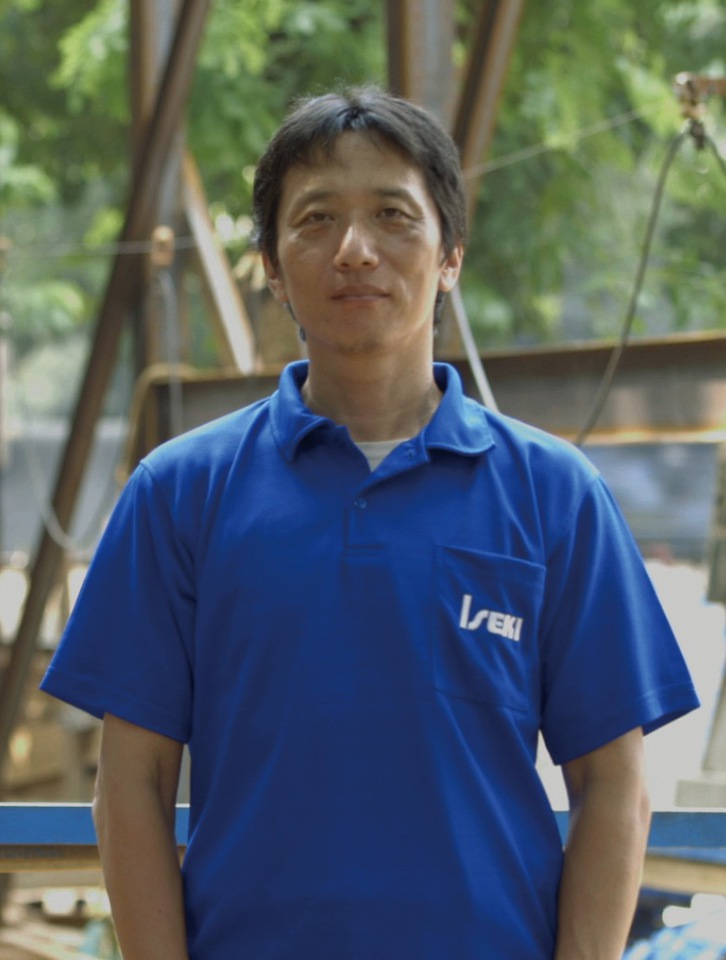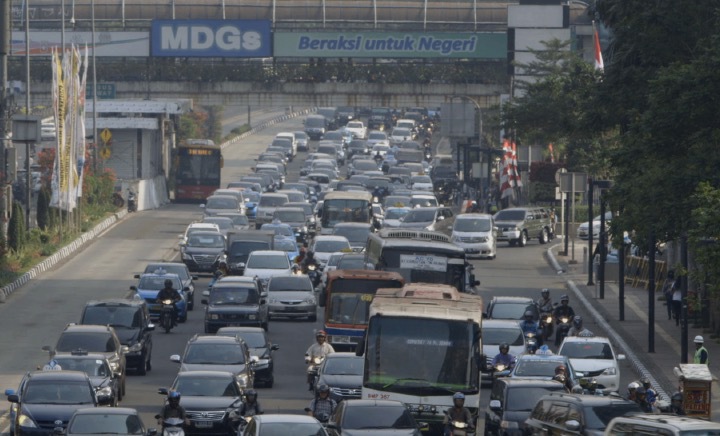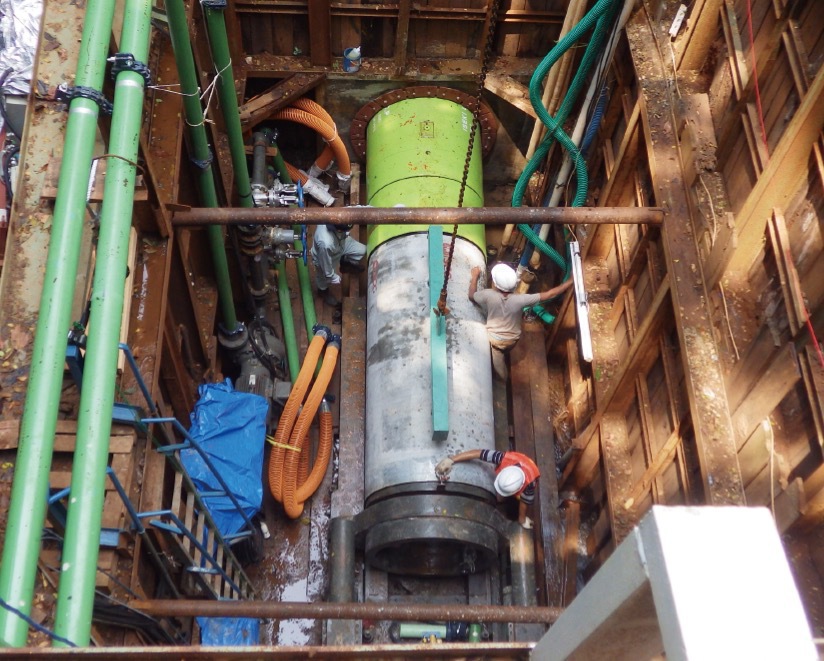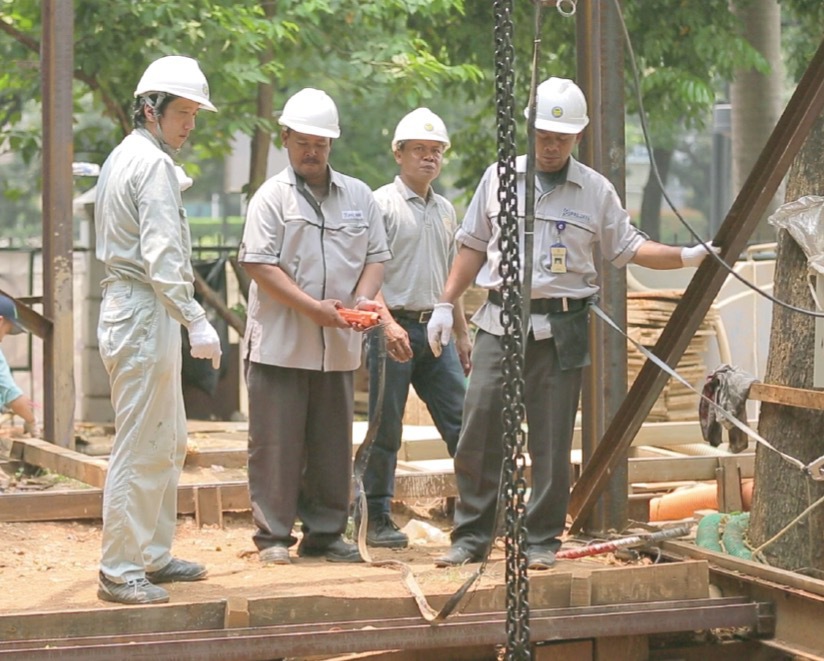Against a backdrop of steady economic growth of five to six percent per year, Indonesia’s cities continue to expand. The skyscraper-studded capital, Jakarta, is now home to some 9.6 million people, and the constant influx of migrant workers from provincial areas shows no sign of slowing. But the development of vital infrastructure has struggled to keep pace with this rapid expansion. Chronic traffic congestion is an issue of major concern to Jakarta’s residents, as is the flooding that has become a regular occurrence during the monsoon season.
Only an estimated two percent of the city of Jakarta adequately serviced by an underground sewerage system. This results in a grave risk to public health when seasonal floodwaters cause gutters to overflow, carrying raw sewage into streets and homes. But this is not an easy problem to correct. Closing roads into the city to allow sewage pipes to be laid beneath them would make the already problematic traffic jams even worse. Civil engineer Katsuyuki Sasaki is an expert on the laying of sewerage pipes who is working in Indonesia to resolve these issues.
Mr. Sasaki has over 20 years’ experience in using remote-controlled tunnel-boring machines in Japan. The drilling of underground paths for the installation of sewage pipes is known as “pipe jacking,” and the technology to do this without disrupting road surfaces was developed in Japan to cope with working in the country’s cramped metropolitan areas. He is currently training the operators of a local civil engineering firm in the techniques necessary to lay sewage pipes one meter in diameter beneath the main streets of Jakarta.
In the past, it was the norm in Indonesia to install underground sewage pipes 100 meters at a time, due to fears that attempting any more would prove too difficult. But utilizing the pipe-jacking techniques learned through Mr. Sasaki’s training, the local team is striving to increase this figure to 300 meters. This will bring numerous benefits, not only in terms of time and money saved but also by reducing the effect of the installation work on traffic flow, through eliminating the need to make holes in road surfaces. Underground obstacles such as boulders are sometimes encountered during the tunneling process. But the ability to make necessary adjustments to the pressure of the boring machine head, stabilize the tunnel face through slurry balance, and calibrate the speed of forward motion while meticulously checking the state and mass of the sand removed from the tunnel, are the hallmarks of an experienced engineer. “Through the experience they gain, I want the local operators to acquire the skills needed to nip any problems in the bud,” says Mr. Sasaki.
Japan’s sewerage network extends to every metropolitan area. But in Indonesia, Mr. Sasaki has found broad scope for his extensive skills. Extolling the fulfilling nature of his work, he comments: “I had never even considered that anybody else would put our techniques into use, so this makes me very happy.”
Of course, during the course of construction work, there are occasional differences of opinion: “The local engineers think I focus too much on safety, when we could be working faster instead,” says Mr. Sasaki. But over his 20-year-long career, he has learned the importance of minimizing risk by not overreaching. “Mistakes made during the construction process are often impossible to correct afterward. So, along with the necessary techniques, I also want to pass on the importance of prioritizing safety to everyone I work with,” he stresses.
Katsuyuki Sasaki
A technical advisor at Iseki Poly-Tech, a company that has been developing and providing tunnel-boring machines for use in laying pipes for over 40 years. He has been working in this field for over 20 years, and has been based in Indonesia since 2014.
A Jakarta street earmarked for the laying of new underground sewerage pipes. Consistently heavy traffic means the road cannot be closed for the necessary construction work to take place.


































































































































